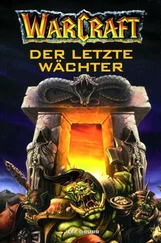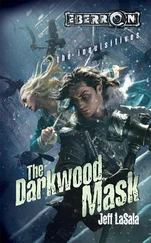Jeff Molofee - NeHe's OpenGL Tutorials
Здесь есть возможность читать онлайн «Jeff Molofee - NeHe's OpenGL Tutorials» весь текст электронной книги совершенно бесплатно (целиком полную версию без сокращений). В некоторых случаях можно слушать аудио, скачать через торрент в формате fb2 и присутствует краткое содержание. Жанр: Программирование, на английском языке. Описание произведения, (предисловие) а так же отзывы посетителей доступны на портале библиотеки ЛибКат.
- Название:NeHe's OpenGL Tutorials
- Автор:
- Жанр:
- Год:неизвестен
- ISBN:нет данных
- Рейтинг книги:3 / 5. Голосов: 1
-
Избранное:Добавить в избранное
- Отзывы:
-
Ваша оценка:
- 60
- 1
- 2
- 3
- 4
- 5
NeHe's OpenGL Tutorials: краткое содержание, описание и аннотация
Предлагаем к чтению аннотацию, описание, краткое содержание или предисловие (зависит от того, что написал сам автор книги «NeHe's OpenGL Tutorials»). Если вы не нашли необходимую информацию о книге — напишите в комментариях, мы постараемся отыскать её.
NeHe's OpenGL Tutorials — читать онлайн бесплатно полную книгу (весь текст) целиком
Ниже представлен текст книги, разбитый по страницам. Система сохранения места последней прочитанной страницы, позволяет с удобством читать онлайн бесплатно книгу «NeHe's OpenGL Tutorials», без необходимости каждый раз заново искать на чём Вы остановились. Поставьте закладку, и сможете в любой момент перейти на страницу, на которой закончили чтение.
Интервал:
Закладка:
* DOWNLOAD Visual C++Code For This Lesson.
* DOWNLOAD ASMCode For This Lesson. (Conversion by Foolman)
* DOWNLOAD Borland C++ Builder 5.0Code For This Lesson. (Conversion by Neil Flynn)
* DOWNLOAD Code Warrior 5Code For This Lesson. (Conversion by Erik Rounds)
* DOWNLOAD CygwinCode For This Lesson. (Conversion by Stephan Ferraro)
* DOWNLOAD DelphiCode For This Lesson. (Conversion by Peter De Jaegher)
* DOWNLOAD DelphiCode For This Lesson. (Conversion by Nelson Nelson)
* DOWNLOAD Game GLUTCode For This Lesson. (Conversion by Milikas Anastasios)
* DOWNLOAD IrixCode For This Lesson. (Conversion by Lakmal Gunasekara)
* DOWNLOAD JavaCode For This Lesson. (Conversion by Jeff Kirby)
* DOWNLOAD LinuxCode For This Lesson. (Conversion by Richard Campbell)
* DOWNLOAD Linux/GLXCode For This Lesson. (Conversion by Mihael Vrbanec)
* DOWNLOAD Linux/SDLCode For This Lesson. (Conversion by Ti Leggett)
* DOWNLOAD Mac OSCode For This Lesson. (Conversion by Anthony Parker)
* DOWNLOAD Mac OS X/CocoaCode For This Lesson. (Conversion by Bryan Blackburn)
* DOWNLOAD MASMCode For This Lesson. (Conversion by Nico (Scalp))
* DOWNLOAD Power BasicCode For This Lesson. (Conversion by Angus Law)
* DOWNLOAD PythonCode For This Lesson. (Conversion by John)
* DOWNLOAD SolarisCode For This Lesson. (Conversion by Lakmal Gunasekara)
* DOWNLOAD Visual BasicCode For This Lesson. (Conversion by Ross Dawson)
* DOWNLOAD Visual FortranCode For This Lesson. (Conversion by Jean-Philippe Perois)
Lesson 02
In the first tutorial I taught you how to create an OpenGL Window. In this tutorial I will teach you how to create both Triangles and Quads. We will create a triangle using GL_TRIANGLES, and a square using GL_QUADS.
Using the code from the first tutorial, we will be adding to the DrawGLScene() procedure. I will rewrite the entire procedure below. If you plan to modify the last lesson, you can replace the DrawGLScene() procedure with the code below, or just add the lines of code below that do not exist in the last tutorial.
int DrawGLScene(GLvoid) // Here's Where We Do All The Drawing {
glClear(GL_COLOR_BUFFER_BIT | GL_DEPTH_BUFFER_BIT); // Clear The Screen And The Depth Buffer
glLoadIdentity(); // Reset The View
When you do a glLoadIdentity() what you are doing is moving back to the center of the screen with the X axis running left to right, the Y axis moving up and down, and the Z axis moving into, and out of the screen.
The center of an OpenGL screen is 0.0f on the X and Y axis. To the left of center would be a negative number. To the right would be a positive number. Moving towards the top of the screen would be a positive number, moving to the bottom of the screen would be a negative number. Moving deeper into the screen is a negative number, moving towards the viewer would be a positive number.
glTranslatef(x, y, z) moves along the X, Y and Z axis, in that order. The line of code below moves left on the X axis 1.5 units. It does not move on the Y axis at all (0.0), and it moves into the screen 6.0 units. When you translate, you are not moving a set amount from the center of the screen, you are moving a set amount from wherever you currently were on the screen.
glTranslatef(-1.5f,0.0f,-6.0f); // Move Left 1.5 Units And Into The Screen 6.0
Now that we have moved to the left half of the screen, and we've set the view deep enough into the screen (-6.0) that we can see our entire scene we will create the Triangle. glBegin(GL_TRIANGLES) means we want to start drawing a triangle, and glEnd() tells OpenGL we are done creating the triangle. Typically if you want 3 points, use GL_TRIANGLES. Drawing triangles is fairly fast on most video cards. If you want 4 points use GL_QUADS to make life easier. From what I've heard, most video cards render objects as triangles anyways. Finally if you want more than 4 points, use GL_POLYGON.
In our simple program, we draw just one triangle. If we wanted to draw a second triangle, we could include another 3 lines of code (3 points) right after the first three. All six lines of code would be between glBegin(GL_TRIANGLES) and glEnd(). There's no point in putting a glBegin(GL_TRIANGLES) and a glEnd() around every group of 3 points. This applies to quads as well. If you know you're drawing all quads, you can include the second group of four lines of code right after the first four lines. A polygon on the other hand (GL_POLYGON) can be made up of any amount of point so it doesn't matter how many lines you have between glBegin(GL_POLYGON) and glEnd().
The first line after glBegin, sets the first point of our polygon. The first number of glVertex is for the X axis, the second number is for the Y axis, and the third number is for the Z axis. So in the first line, we don't move on the X axis. We move up one unit on the Y axis, and we don't move on the Z axis. This gives us the top point of the triangle. The second glVertex moves left one unit on the X axis and down one unit on the Y axis. This gives us the bottom left point of the triangle. The third glVertex moves right one unit, and down one unit. This gives us the bottom right point of the triangle. glEnd() tells OpenGL there are no more points. The filled triangle will be displayed.
glBegin(GL_TRIANGLES); // Drawing Using Triangles
glVertex3f( 0.0f, 1.0f, 0.0f); // Top
glVertex3f(-1.0f,-1.0f, 0.0f); // Bottom Left
glVertex3f( 1.0f,-1.0f, 0.0f); // Bottom Right
glEnd(); // Finished Drawing The Triangle
Now that we have the triangle displayed on the left half of the screen, we need to move to the right half of the screen to display the square. In order to do this we use glTranslate again. This time we must move to the right, so X must be a positive value. Because we've already moved left 1.5 units, to get to the center we have to move right 1.5 units. After we reach the center we have to move another 1.5 units to the right of center. So in total we need to move 3.0 units to the right.
glTranslatef(3.0f,0.0f,0.0f); // Move Right 3 Units
Now we create the square. We'll do this using GL_QUADS. A quad is basically a 4 sided polygon. Perfect for making a square. The code for creating a square is very similar to the code we used to create a triangle. The only difference is the use of GL_QUADS instead of GL_TRIANGLES, and an extra glVertex3f for the 4th point of the square. We'll draw the square top left, top right, bottom right, bottom left (clockwise). By drawing in a clockwise order, the square will be drawn as a back face. Meaning the side of the quad we see is actually the back. Objects drawn in a counter clockwise order will be facing us. Not important at the moment, but later on you will need to know this.
glBegin(GL_QUADS); // Draw A Quad
glVertex3f(-1.0f, 1.0f, 0.0f); // Top Left
glVertex3f( 1.0f, 1.0f, 0.0f); // Top Right
glVertex3f( 1.0f,-1.0f, 0.0f); // Bottom Right
glVertex3f(-1.0f,-1.0f, 0.0f); // Bottom Left
glEnd(); // Done Drawing The Quad
return TRUE; // Keep Going
}
Finally change the code to toggle window / fullscreen mode so that the title at the top of the window is proper.
if (keys[VK_F1]) // Is F1 Being Pressed?
{
keys[VK_F1]=FALSE; // If So Make Key FALSE
KillGLWindow(); // Kill Our Current Window
fullscreen=!fullscreen; // Toggle Fullscreen / Windowed Mode
// Recreate Our OpenGL Window ( Modified )
if (!CreateGLWindow("NeHe's First Polygon Tutorial",640,480,16,fullscreen))
Интервал:
Закладка:
Похожие книги на «NeHe's OpenGL Tutorials»
Представляем Вашему вниманию похожие книги на «NeHe's OpenGL Tutorials» списком для выбора. Мы отобрали схожую по названию и смыслу литературу в надежде предоставить читателям больше вариантов отыскать новые, интересные, ещё непрочитанные произведения.
Обсуждение, отзывы о книге «NeHe's OpenGL Tutorials» и просто собственные мнения читателей. Оставьте ваши комментарии, напишите, что Вы думаете о произведении, его смысле или главных героях. Укажите что конкретно понравилось, а что нет, и почему Вы так считаете.








